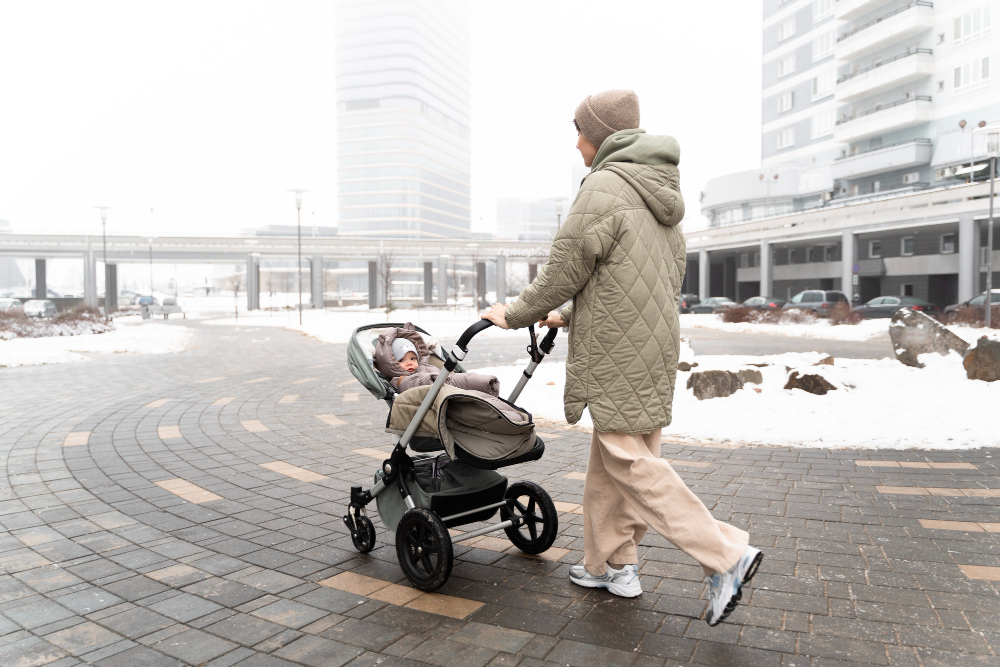Travel system prams are an essential gear choice for parents seeking convenience and versatility in their daily routines. Combining the functionality of a stroller with the practicality of a detachable car seat, these prams offer seamless transitions from car to sidewalk, ensuring comfort and safety for your baby throughout the journey. This comprehensive guide will walk you through everything you need to know about choosing, using, and maintaining travel system prams.
1. What are Travel System Prams?
Travel system prams, often referred to simply as travel systems, integrate a stroller and a car seat into a unified unit. They are designed to streamline the process of transporting your baby, allowing you to move seamlessly between car rides and walks without disturbing your little one’s comfort or sleep. The car seat can be easily attached and detached from the stroller base, making it ideal for parents who frequently travel or run errands.
2. Benefits of Travel System Prams
Choosing a travel system pram offers several advantages over traditional strollers or standalone car seats:
Convenience: Travel systems eliminate the hassle of transferring your baby between a car seat and a stroller. You can move from driving to walking with minimal disruption.
Cost-effectiveness: By purchasing a travel system, you avoid the need to buy separate strollers and car seats, saving both money and storage space.
Versatility: Most travel systems are adaptable, accommodating your child from infancy through toddlerhood. Some models even support multiple children with additional attachments.
Comfort: Designed with padded seats, adjustable recline positions, and ample storage, travel systems prioritize your baby’s comfort during outings.
3. Types of Travel System Prams
When selecting a travel system pram, consider the following types based on your lifestyle and preferences:
All-in-One Designs: These comprehensive systems include a stroller frame, a car seat, and often a bassinet or toddler seat, providing flexibility as your child grows.
Lightweight Models: Ideal for urban settings, lightweight travel systems offer easy maneuverability through crowded streets and public transportation.
Jogging Prams: Featuring sturdy wheels and robust frames, jogging travel systems are suitable for active parents who enjoy outdoor adventures with their babies.
4. Key Features to Look for
To ensure you choose the best travel system pram for your needs, pay attention to these essential features:
Safety Standards: Verify that the travel system meets current safety regulations and includes features such as a five-point harness, impact-absorbing materials, and a secure base for the car seat.
Adjustability: Look for adjustable handlebars, seat positions, and canopy settings to accommodate your height and your baby’s comfort preferences.
Storage Options: Evaluate the size and accessibility of storage baskets, compartments, and cup holders to accommodate diaper bags, snacks, and personal items during outings.
5. How to Choose the Right Travel System Pram
Navigating the market for travel system prams can feel overwhelming, but these steps will simplify your decision-making process:
Assess Your Lifestyle: Consider where and how often you’ll use the travel system. Urban dwellers might prioritize compact designs, while suburban families may value durability and storage space.
Budget Considerations: Determine your budget and explore travel systems that offer the best features within your price range. Remember, quality and safety should never be compromised.
Read Reviews: Research customer reviews and ratings to gain insights into real-world experiences with different travel system models. Pay attention to durability, ease of use, and customer service.
6. Maintenance Tips for Travel System Prams
Proper maintenance ensures your travel system pram remains safe, functional, and comfortable for years to come:
Regular Cleaning: Wipe down fabric surfaces with a damp cloth and mild soap to remove dirt and stains. Avoid harsh chemicals that could damage the materials.
Inspect Wheels and Brakes: Routinely check the wheels for debris or wear and tear. Lubricate wheel bearings and ensure the brakes engage properly before each use.
Storage and Care: Store your travel system pram in a cool, dry place to prevent mold and mildew growth. Avoid prolonged exposure to direct sunlight, which can fade fabrics and weaken materials.
7. Safety Guidelines and Best Practices
Prioritize safety at all times when using your travel system pram:
Installation: Follow manufacturer instructions carefully when installing the car seat base in your vehicle. Ensure a secure fit and verify that the seat belt or LATCH system is properly tightened.
Harness Use: Always secure your baby with the harness system provided, adjusting straps as your child grows to maintain a snug fit.
Terrain Considerations: Use caution when navigating uneven or unstable surfaces. Lock the stroller’s wheels when stationary and avoid steep inclines or rough terrain that could compromise stability.
8. Common Issues and Troubleshooting
Address common concerns that may arise with travel system prams:
Brake Malfunctions: If the brakes fail to engage or release properly, check for debris or obstruction around the brake mechanism. Clean and lubricate as needed.
Folding Mechanism Difficulties: Practice folding and unfolding your travel system pram according to the manufacturer’s instructions. If it becomes challenging, consult the user manual or contact customer support for assistance.
Customer Support: Keep contact information for the manufacturer or retailer handy in case you need assistance with repairs, replacements, or technical support.
Conclusion
- Investing in a travel system pram is a decision that enhances both convenience and safety for you and your baby. By understanding the features, benefits, and maintenance tips outlined in this guide, you can confidently choose a travel system pram that fits your lifestyle and preferences.
- Whether you’re navigating city streets, exploring parks, or simply running errands, a well-chosen travel system pram provides peace of mind and comfort. Prioritize safety, functionality, and durability when making your selection, ensuring years of enjoyable outings with your little one.
- This comprehensive guide aims to empower you with the knowledge needed to select, use, and maintain a travel system pram effectively. From safety guidelines to troubleshooting tips, every aspect is designed to support your journey as a parent.
9. FAQs about Travel System Prams
FAQ 1: What age range are travel system prams suitable for?
Travel system prams are typically designed to accommodate newborns and infants weighing up to 35-40 pounds, depending on the specific model’s weight limit.
FAQ 2: Can I use a travel system pram without the car seat?
Yes, many travel system prams allow you to detach the car seat and use the stroller independently as your child grows older and no longer needs the car seat.
FAQ 3: Are travel system prams compatible with all car seats?
Compatibility varies by brand and model. Always check compatibility guidelines provided by the manufacturer to ensure your car seat is compatible with the travel system pram.
FAQ 4: How do I clean my travel system pram?
Most travel system prams can be cleaned with a damp cloth and mild soap. Avoid submerging parts in water or using abrasive cleaners that could damage the fabric or frame.
FAQ 5: Are travel system prams suitable for travel?
Yes, travel system prams are designed to be portable and convenient for travel. Consider lightweight or compact models for easier transportation and storage during trips.
Also read : Joie Versatrax Travel System: 10 Ways It Makes Parenting Easier




Leave a Comment